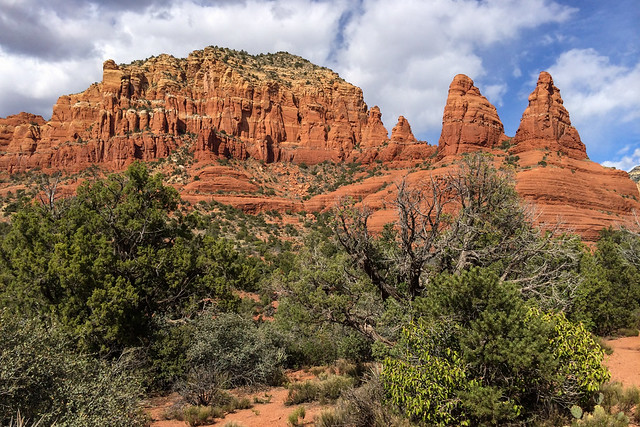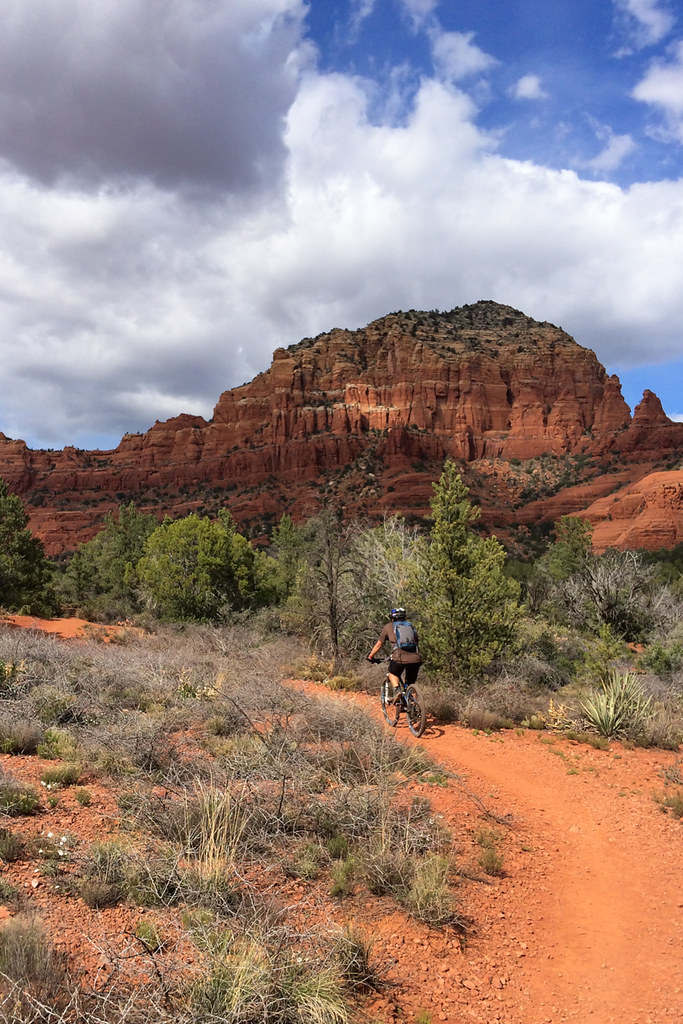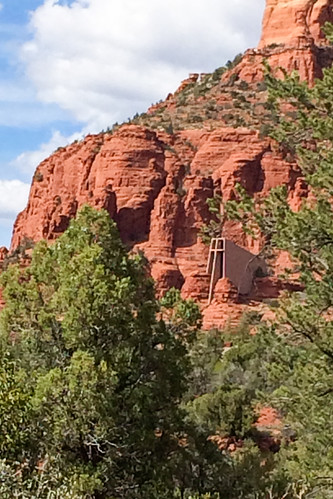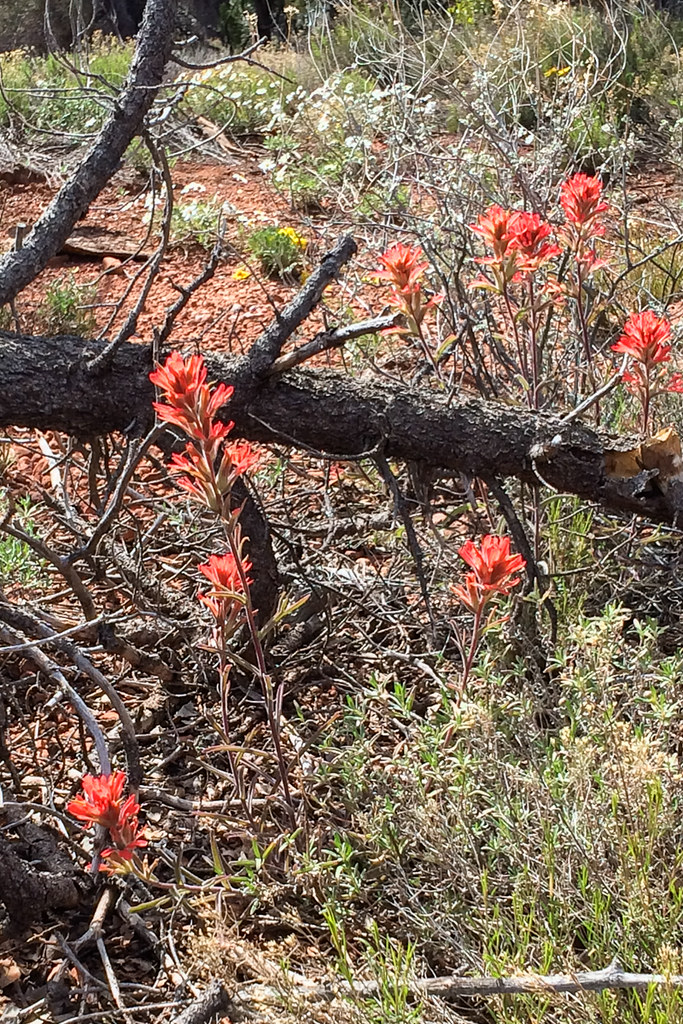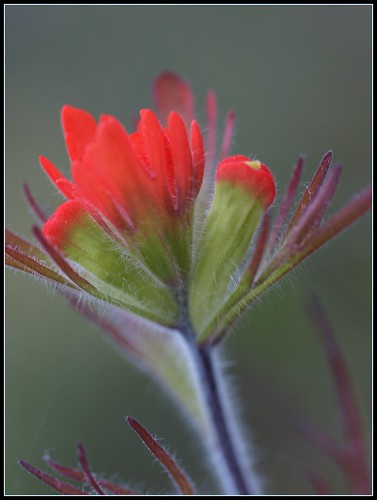For the second year in a row, I embarked on a thousand-mile circle trip of Arizona — it helps fine tune my driving stamina in anticipation of the cross-country drive to the Midwest in another month.
This year I had the good fortune to have a companion on the excursion. My younger daughter, visiting from Wisconsin, is an avid fan of National Parks and enthusiastically agreed to accompany me on a trip through the heart of Arizona while stopping at one National Park plus four National Monuments.
Our first stop was Sedona, not a National Park, but the surrounding red rock area certainly has the flavor of one and qualifies as a National Landscape Treasure if not an official park. These rock formations, the Madonna and Two Nuns, overlook the Chapel of the Holy Cross, pictured below.
Exploring the trails was our chief source of pleasure. We hiked the Little Horse, a wide trail once an old jeep trail. We crossed dry creek beds, though there was evidence of the recent rainfall – thick red mud and a variety of prints, some human, some not. The trail is a favorite not only of hikers, but cyclists also take to these hills.
Once we had walked a half mile, the Chapel of the Holy Cross comes into view, a modern structure that appears to be clinging to the red rock through spiritual intervention.
Yucca are a common plant along the trail, reminding us that we are not far from the desert.
Scarlet Indian Paintbrush is a favorite flower, adding bright color, though we only spotted it in a few places. Usually we saw just one or two stalks of the bright orange stalks, so we stopped to take photos when we found a large stand of the wildflower in the brush of a downed tree.
The flowers of Indian paintbrush are edible, and were often mixed with fresh greens by southwestern Native American tribes. It was also used as a hair conditioner, a treatment for rheumatism, and an overall health tonic – an all-purpose plant!
A criss-cross of trails makes it doubly important to note the trail signs. Though Little Horse Trail is an easy hike, it leads into the wilderness area beyond Chicken Point. It’s always a good idea to have a map and plenty of water when hiking any of the red rock trails.
Lots of red rock. Lots of blue skies with fast-moving clouds. Lots of Arizona cypress. And views of many of the more recognizable rock monuments. A great place to get in touch with the natural beauty of Sedona.
